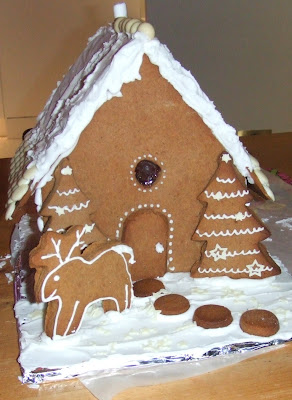This week I made a necklace. I must confess that it is not my own idea - I saw it on a weekly email from Beads Direct and sent off for the components straight away.
It is made by cutting silver chain into 2 lengths - 8.5 inches and 12 inches and attaching a clasp and large jump ring to one end of each piece to form the fastening. Then I attached the other end of the shorter chain to the main ring of the large leaf with a jump ring, along with the large crystal dangle. This dangle comes as a silver cup and separate crystal (a Swarovski Rivoli) that you glue in so that you can choose the colour. I glued it with Super Glue but had to leave it flat all day to dry properly. The glue they recommend on their website might have been better but I was too tight to order it!
Next I attached the small leaf to the other end of the longer chain with a fine jump ring.
With the longer length of chain I had to experiment to get it hanging correctly. I tried fixing it to the main jump ring on the leaf so that the remaining chain hung vertically behind the middle of the leaf but this looked too boring. So I ended up fixing it to the top edge with a fine jump ring so that the weight of the crystal dangle pulls the large leaf to one side slightly and the longer chain runs across the back at an angle.
I have had lots of complements at work on it today so I am pretty happy with the end result!
It is made by cutting silver chain into 2 lengths - 8.5 inches and 12 inches and attaching a clasp and large jump ring to one end of each piece to form the fastening. Then I attached the other end of the shorter chain to the main ring of the large leaf with a jump ring, along with the large crystal dangle. This dangle comes as a silver cup and separate crystal (a Swarovski Rivoli) that you glue in so that you can choose the colour. I glued it with Super Glue but had to leave it flat all day to dry properly. The glue they recommend on their website might have been better but I was too tight to order it!
Next I attached the small leaf to the other end of the longer chain with a fine jump ring.
With the longer length of chain I had to experiment to get it hanging correctly. I tried fixing it to the main jump ring on the leaf so that the remaining chain hung vertically behind the middle of the leaf but this looked too boring. So I ended up fixing it to the top edge with a fine jump ring so that the weight of the crystal dangle pulls the large leaf to one side slightly and the longer chain runs across the back at an angle.
I have had lots of complements at work on it today so I am pretty happy with the end result!





































